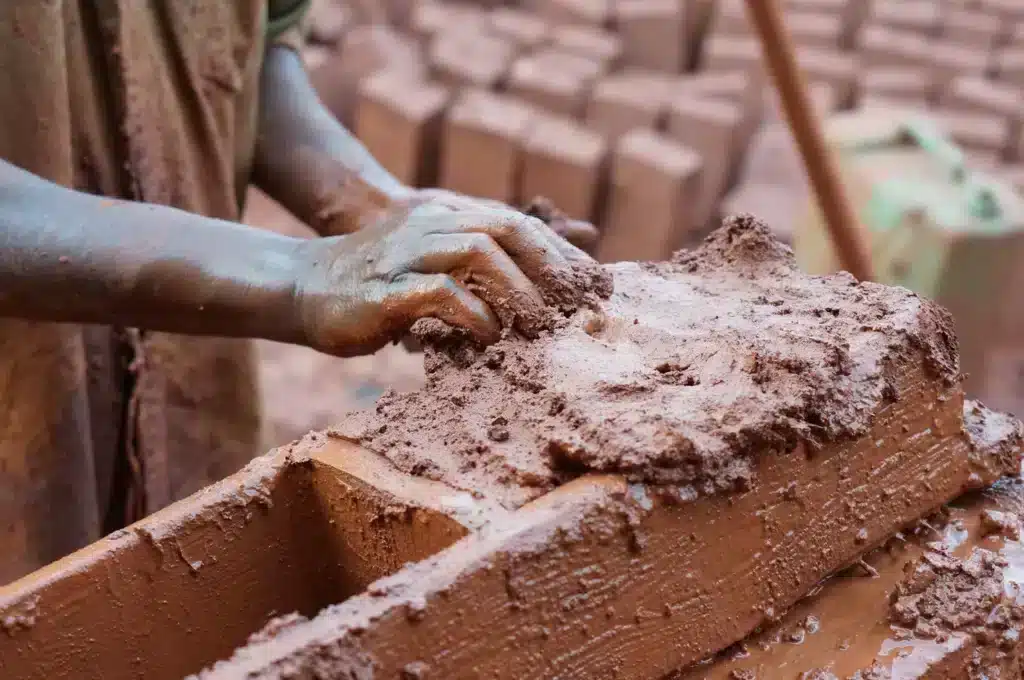When you go to the store to buy clay, most labels will tell you what percentage of grog the clay contains, as well as the grain size. But what is grog? And what is it used for?
What is grog?
Chamotte is a granular or powdery material made from fired clay or stone. It is added to clay to make it stronger, to add texture, and to ensure that the clay shrinks less when drying out. Everything depends on the type of grog, and the amount.

Some grog is made from heat-resistant stones, such as brick. Other grog is made from leftover ceramics, or clay fired specifically for this purpose. If the clay was fired at a high temperature, higher than cone 10, it is called hard grog. This type of grog is used most often, because it will not melt during firing. If the clay was fired at a lower temperature, it is called soft grog. This is porous, and it will melt in the kiln.
In addition, grog is also categorized by grain size. Often the label will tell you the size of the grain in mm. Different sizes lead to different results with the clay. For example, keep in mind that clay with coarse grog will be rough on your hands if you use it for throwing.

The benefits of grog
An important reason to use a clay with grog is that it reduces the chance of cracking. The grog particles in the clay have already been fired, so they will not shrink during firing. As a result, the whole pot won’t shrink as much, which means there’s less chance of cracks.
Grog also creates more space between the (unfired) clay particles, allowing water to drain out more easily. And that again reduces the chance of cracking.

Grog also has some benefits even before your pot goes into the kiln. It makes the clay easier to work with, because it strengthens the structural integrity of your clay. You see, grog particles are a lot bigger than clay particles. They form a kind of skeleton that makes your clay less likely to lose its shape.
Because the grog particles are made of fired clay, they will not shrink during the drying and firing process, but the clay around them will.
So around the grog particles you will get tiny hairline cracks. These are like tunnels that allow air bubbles to escape. And air bubbles, if they are trapped in your pot, end up causing cracks. The bigger or more solid the pot, the coarser the grog in your clay should be.
Lastly, you can also use clay with grog to achieve a certain texture. Because clay with a coarse grog will result in a pot with a rougher surface.
Just like clay, grog is very versatile. The effect it has on your pot, depends on the percentage and size of the grain. And that means it’s time for trial and error!





